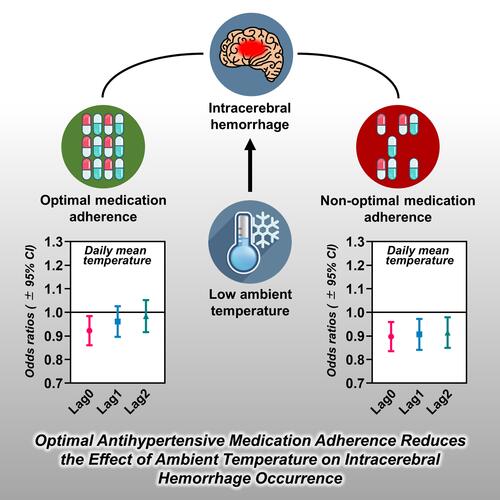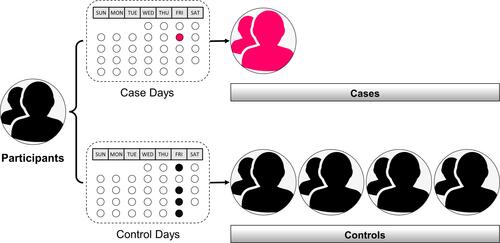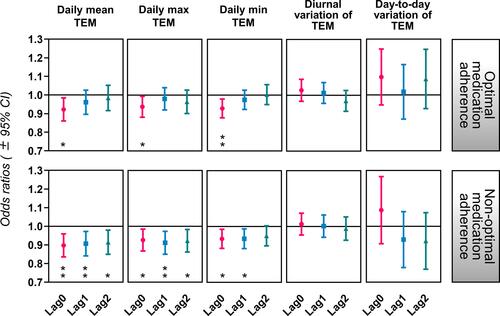Figures & data

Figure 1 A graph illustrates to use of patients as self-control in a time-stratified case-crossover approach. In this study, the case days were the days of symptom onset, and the control days were the other corresponding days in the same month with seven days as the interval. Participants’ exposure to risk factors in case days and control days were compared to judge the correlation between exposure and target event occurrence.

Figure 2 A research timeline illustrates the temporal logic of the included data. In this study, lag0 referred to the day when the symptoms of intracerebral hemorrhage (ICH) occurred. Lag1 referred to the previous day before lag0, and lag2 referred to the previous day before Lag1, and so on until lag30. The proportion of prescription days covered (PDC) by antihypertensive mediation in the last month before ICH onset was used to represent the 1-month medication adherence. The ambient temperature (TEM) in lag0 to lag2 were included to study its impact on ICH.

Table 1 Baseline Characteristics of Intracerebral Hemorrhage Patients Enrolled in This Study Who Had a History of Hypertension
Table 2 The Effect of Ambient Temperature on Intracerebral Hemorrhage Occurrence Stratified by Different Antihypertensive Medication Adherence (OR, 95% CI)
Figure 3 The influence of daily ambient temperature (TEM) and their fluctuation on intracerebral hemorrhage onset in patients with different antihypertensive medication adherence. The diurnal variation (the maximum of the day minus the minimum) and the day-to-day variation (the absolute value of the mean in the day minus the one in the previous day) of TEM were calculated to represent fluctuation. Optimal medication adherence was the patient had a proportion of prescription days covered (PDC) > 80%, and non-optimal medication adherence was PDC ≤ 80%. *P < 0.05; **P < 0.01.

